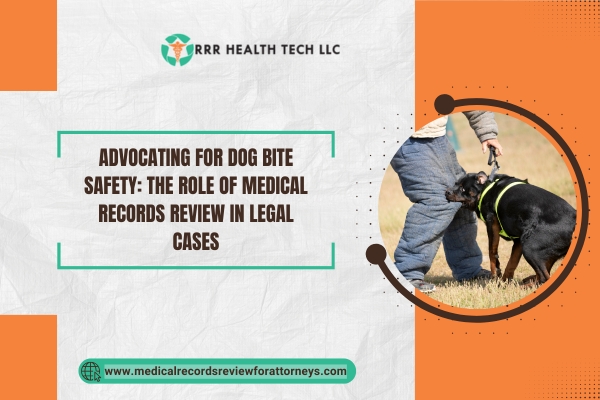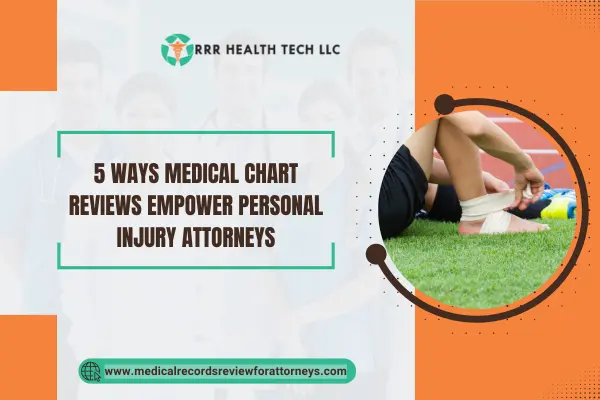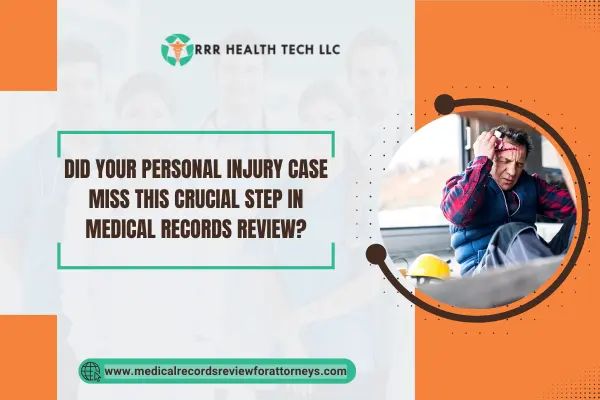
One of the most injurious issues of concern in America that poses both physical and psychological trauma is dog bites. It is very important to know the legal aspects and safety measures associated with dog bites, from both the perspective of a pet owner and a victim. This article explains dog bite safety laws pertaining to Ohio and discusses the role of medical records review services for lawyers in developing strong cases for their clients.
The Importance of Dog Bite Safety
Understanding Dog Bite Statistics
• Tracking rate: The CDC recently said that there are about 4.5 million dog bites every year in the US. This figure is astonishing given the over 800,000 people seeking out medical care due to these bites.
• Demographics: Children are usually the most affected segments, which comprise a sizable chunk of dog bite victims.
Common Causes of Dog Bites
• Fear and Anxiety: When exposed to threats, dogs bite, which is always in response to feelings of fear and anxiety.
• No Skillness: Aggression is more likely to occur in un-socialized and untrained dogs.
• Over Care: A dog that is not properly supervised when taken in public places can potentially cause bodily harm.
Legal Framework Surrounding Dog Bites in Ohio
Overview of Ohio Dog Bite Laws
- Strict Liability: Ohio follows a strict liability law, meaning dog owners are responsible for injuries caused by their dogs, regardless of the dog’s previous behavior.
- Local Regulations: Some municipalities may have specific ordinances regarding certain breeds or leash laws.
Responsibilities of Dog Owners
• Control and Restraint: Every dog owners has the duty to keep his pet under control at all times especially in public places.
• Vaccination Requirements: Dogs are required to be vaccinated against rabies, and the owner must keep proper record regarding vaccination.
Preventing Dog Bite Incidents
Practical Safety Tips for Dog Owners
• Socialization: A dog that is properly trained from an early age tends to become friendly towards strangers and other animals.
• Supervision: When dogs are engaging with young children or strangers, there should be increased vigilance.
• Leash Use: Dogs that are taken to public places should be leashed for their safety.
Recognizing Warning Signs in Dogs
• Body language: Knowing how to read a dog’s body language can help restrict bites. Signs of uneasiness include growling, barking, and stiff posture.
• Respecting Boundaries: Any dog that is eating, resting or has puppies should not be approached.
What to Do After a Dog Bite
Immediate Steps to Take
- Medical Attention: Almost every bite, no matter how small, can result in an infection. It is most certainly a good idea to seek medical assistance.
- Take Pictures: Photographs of the injuries sustained are definitely important so that the entire case can be documented.
- Collect Dog Owner’s Information: It is prudent to gather the contact information which includes vaccination information of the owner’s dog.
The Role of Medical Records Review in Legal Cases
- Importance in Legal Proceedings: Medical records provide critical evidence of the injuries sustained and the treatment received, which can be pivotal in establishing the extent of damages in a legal claim.
- Expert Testimony: Medical professionals can provide insights into the injuries and their implications, enhancing the case’s credibility.
How Medical Records Review Supports Attorneys
Comprehensive Case Building
- Establishing Causation: Medical records help link the injuries directly to the dog bite incident, providing a clear narrative for the case.
- Expert Insights: Medical professionals can testify about the nature of the injuries and the expected recovery process, which can significantly impact compensation claims.
Current Trends in Medical Records Review
• Technology: The introduction of new tools and software is increasing the rate at which medical records can be reviewed. This results in faster turnaround times for attorneys.
• Legal Requirements: It is equally important for attorneys to be aware of changes in laws and policies if they wish to adequately represent their clients.
Case Studies
Case Study 1: Dog Bite Incident in Ohio
• Summary: A child was outside her house playing in the yard when a neighbor’s dog attacked her.
• Challenges: The child’s claim is that she was attacked without provocation, and the dog owner’s case is that the child instigated the action which brings difficulty to the case.
• Solutions: Both the medical examinations and the eyewitness testimonies corroborated the child’s version of the attack as well as the supporting statements provided.
Case Study 2: Attack by a Stray Dog
• Summary: A jogger got assaulted by an unknown dog while doing his exercise in a public park.
• Challenges: The legal proceedings are difficult since the owner of the dog, as well as the dog, is virtually unknown.
• Solutions: The medical records showed the injuries and the local authority on controlling animals supplied information on other instances of similar behavior in the region, which showed collective negligence.
Conclusion
It is equally important to improve safety around dog bites for pet owners and prospective victims. Grasping the legal aspects alongside the medical records review may decisively affect any dog bite case’s outcome. Staying informed and proactive is essential in mitigating canine bite occurrences and in bringing the necessary justice on behalf of the victims.


